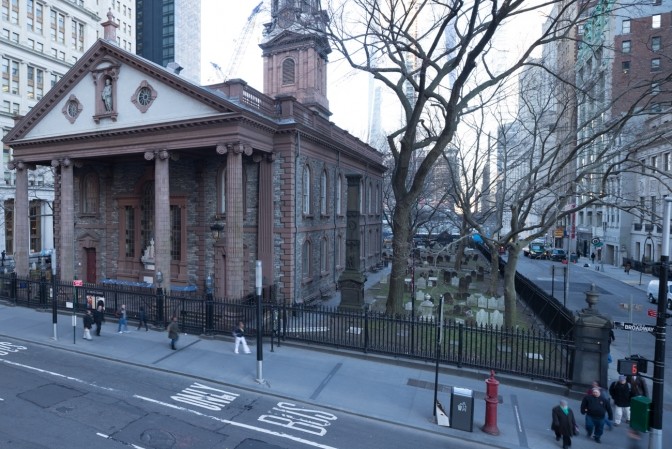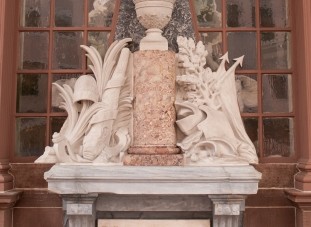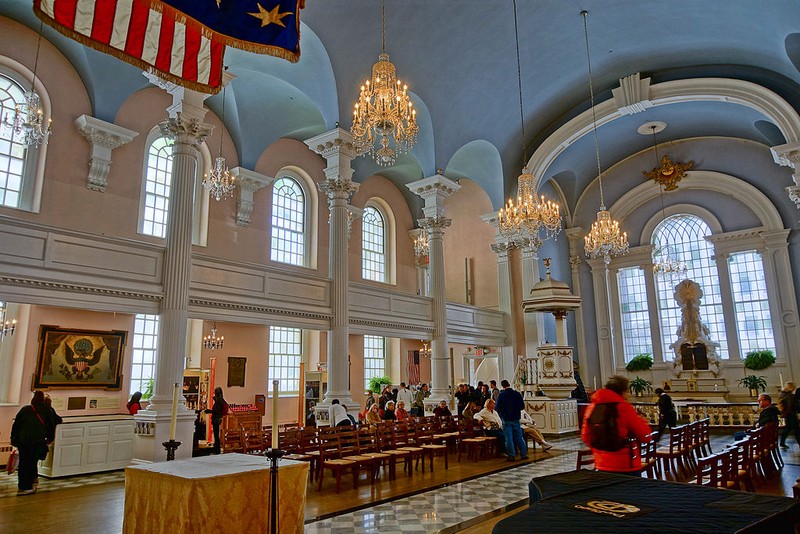St. Paul's Chapel
Introduction
Text-to-speech Audio
St. Paul's Chapel was built between 1764 and 1766. It was the tallest building in the city at that time, and remains the oldest surviving church in Manhattan. George Washington attended services at this chapel, and visitors can see his original pew inside the church. Washington and members of Congress also attended a special service at the church prior to his inauguration on April 30, 1789. At the time, the church was one of the largest public buildings to have survived the Great New York Fire of 1776. It also survived the terrorist attack on September 11, 2001, without any damage and became the center of relief operations for rescue workers in the aftermath of the attack.
The church is also home to the first monument commissioned by the United States Congress. The monument is located on the east side of the church and honors Patriot Richard Montgomery. Benjamin Franklin personally oversaw the construction of the monument after Congress commissioned its creation on January 25, 1776.
Images
St. Paul's Chapel is the oldest in the city and welcomes over one million tourists each year.

The monument to General Richard Montgomery, a patriot who lost his life in the American Revolution, is located on the east window of St. Paul’s Chapel, facing Broadway.

The interior of the chapel, including Washington's pew on the left

Backstory and Context
Text-to-speech Audio
The creation of St. Paul's Chapel was granted permission by Queen Anne as a chapel-of-ease for worshipers who lived north of the Trinity Church in 1766. It was established during Britain's occupation of New York and was the first Anglican Church in Manhattan. The architects for this chapel are Andrew Gautier and James Crommelin Lawrence. St. Paul's has the classical portico, boxy proportions, and domestic details that are characteristic of Georgian churches such as James Gibbs' London church—St Martin-in-the-Fields, after which it was modeled. It served as a Revolutionary War Hospital and cemetery, and during the 9/11 attack, it hosted recovery workers.
On September 21, 1776, a fire broke out in the Fighting Cock Tavern. The fire quickly spread, destroying many nearby buildings including the Trinity Church. Miraculously, St. Paul's Chapel escaped the flames, bringing signs of hope. On his Inauguration Day on April 30, 1789, George Washington attended services at St. Paul’s. He continued to worship there for the next two years while New York served as the nation’s capital.
Many important people are buried in the cemetery of the chapel. The patriots buried at St. Paul's include four of the original members of the Society of the Cincinnati, a patriotic organization of the officers who served under George Washington. They are Major John Lucas and Major Job Summer, who both died of yellow fever in 1789; Lt. Col. Etienne Marie Bechet Sieur de Rochefontaine, a French officer who later commanded the artillery school at West Point; and Dr. John Francis Vacher. Other patriots buried in the cemetery include John Bailey, who forged the Washington battle sword in the Smithsonian, and John Holt, editor of the New York Gazette and New York Journal.
The building was declared a National Historic Landmark in 1960.
